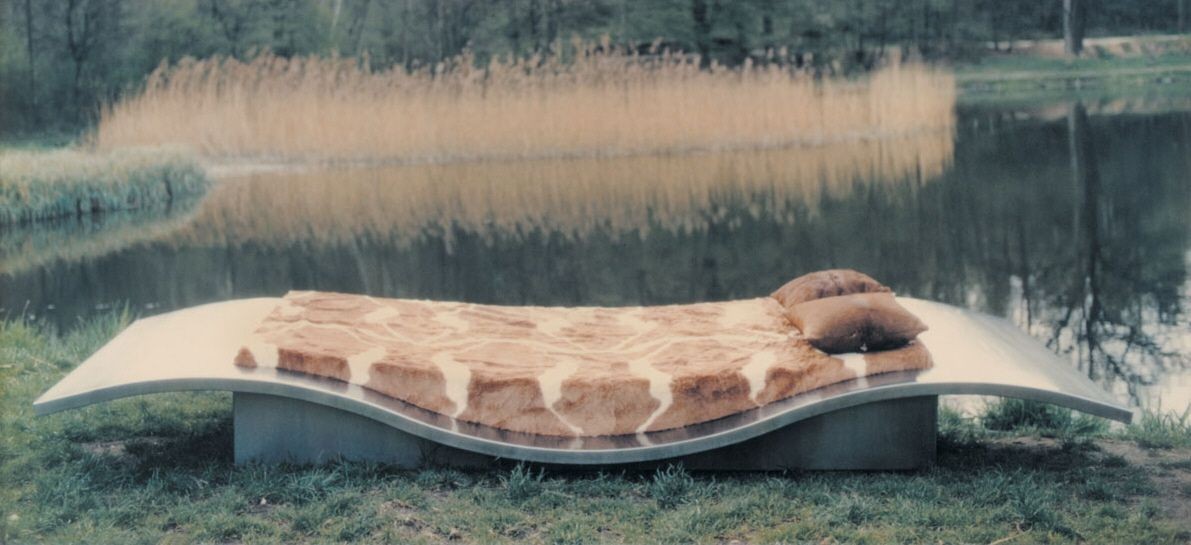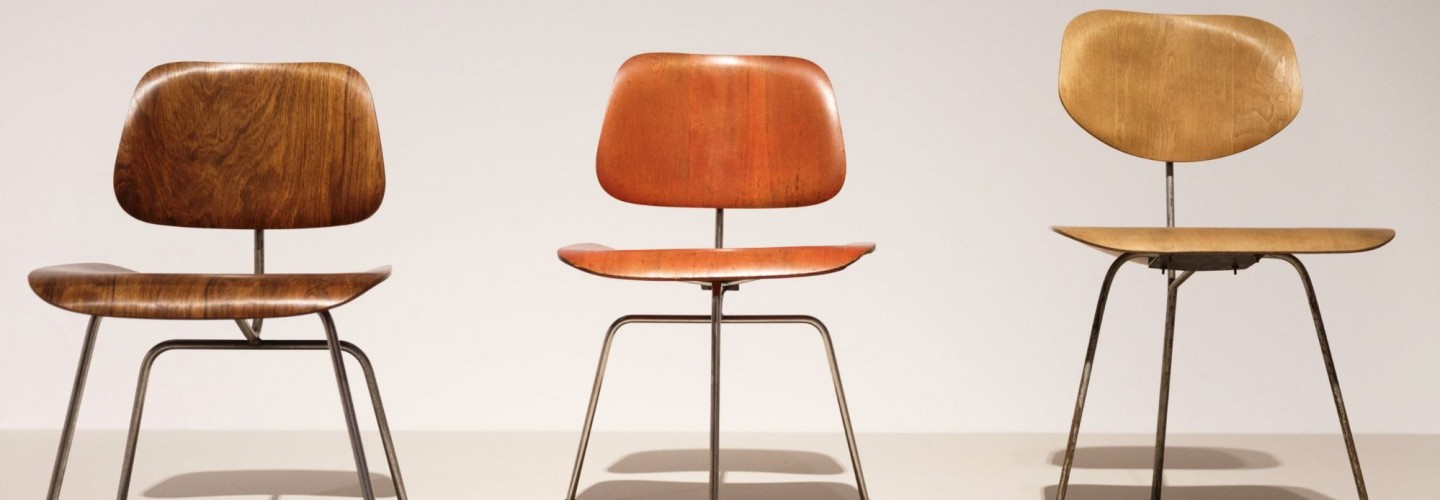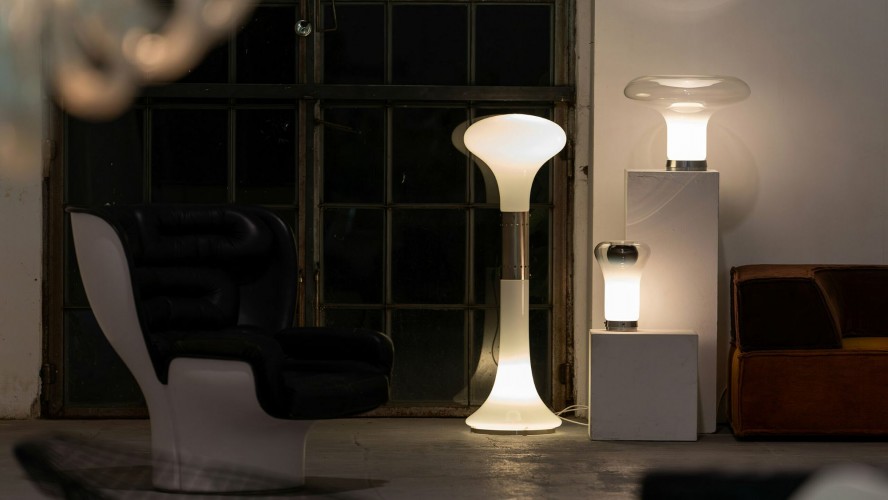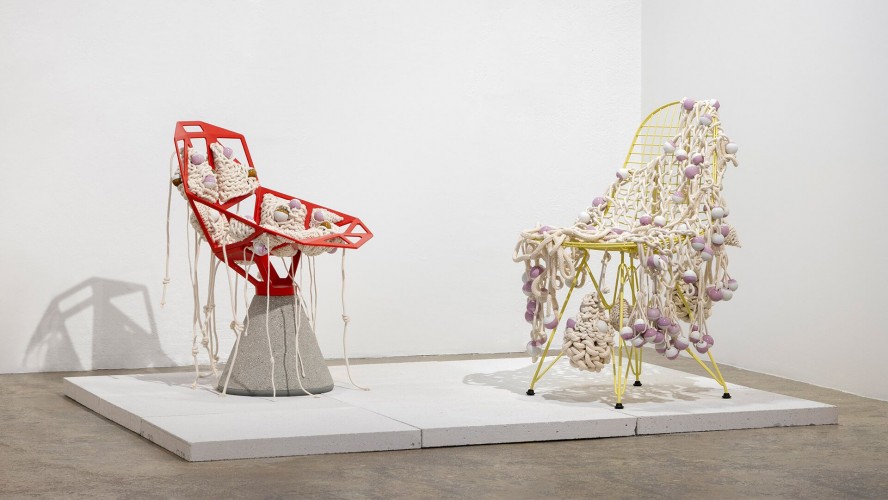Όταν η Maria Pergay μάς επανασύστησε το ατσάλι
DS.WRITER:
Ιωακειμίδου Χριστίνα
Πηγή Κεντρικής Εικόνας: s3files.core77.com
Ανοξείδωτο ατσάλι, ξύλο, φίλντισι και υλικά εξαιρετικά φινιρισμένα, σεβόμενα τη μίνιμαλ αισθητική. Αυτή η άκρως απόλυτη και ουσιαστική αναφορά θα μπορούσε να χαρακτηρίσει ολόκληρη τη δουλειά τής Maria Pergay. Εντούτοις, η περιγραφή αυτή θα ήταν λίγη, για να αποδώσει ολόκληρη την καλλιτεχνική προσφορά της ίδιας στον χώρο του design.
Από τη Ρουμανία στο Παρίσι
Γεννημένη στα χρόνια του μεσοπολέμου, η ρωσο-εβραϊκής καταγωγής Pergay ήταν ένα από τα θύματα των διώξεων και της πολιτικής του φόβου, που επεκτάθηκε σε ολόκληρη την Ευρώπη στη διάρκεια του Β’ Παγκοσμίου πολέμου. Ήταν άλλωστε παιδί, όταν, μαζί με τη μητέρα της, φυγαδεύτηκε από τη Μολδαβία στο Παρίσι, αποζητώντας την ασφάλεια. Αμέσως μετά το τέλος του πολέμου, η ίδια στρέφεται προς τις τέχνες, φοιτώντας στο Institut des Hautes Études Cinématographiques. Εκεί, επικεντρώθηκε στη μελέτη των κοστουμιών και της σκηνογραφίας, μελέτες που φαίνεται να επηρέασαν και τον τρόπο που επεξεργάζεται το αγαπημένο της ατσάλι, δημιουργώντας πολλές φορές πτυχώσεις σε αυτό, θυμίζοντάς μας αυτές του υφάσματος. Παράλληλα με τις σπουδές της στην κινηματογραφία, παρακολουθεί μαθήματα στην Académie de la Grande Chaumière του Ossip Zadkine. Οι δύο αυτές διαφορετικές κατευθύνσεις φαίνεται να βοήθησαν την Pergay στην ανάπτυξη του δικού της στυλ design, αφού, στην αρχή της καριέρας της, ασχολήθηκε με την παραγωγή διακοσμητικών μεταλλικών αντικειμένων που προορίζονταν για τη διακόσμηση πολλών παρισινών μπουτίκ. Στα τέλη της δεκαετίας του 1950, η δουλειά της φαίνεται να αναγνωρίζεται, καθώς αρχίζει η συνεργασία της με την Uginox.
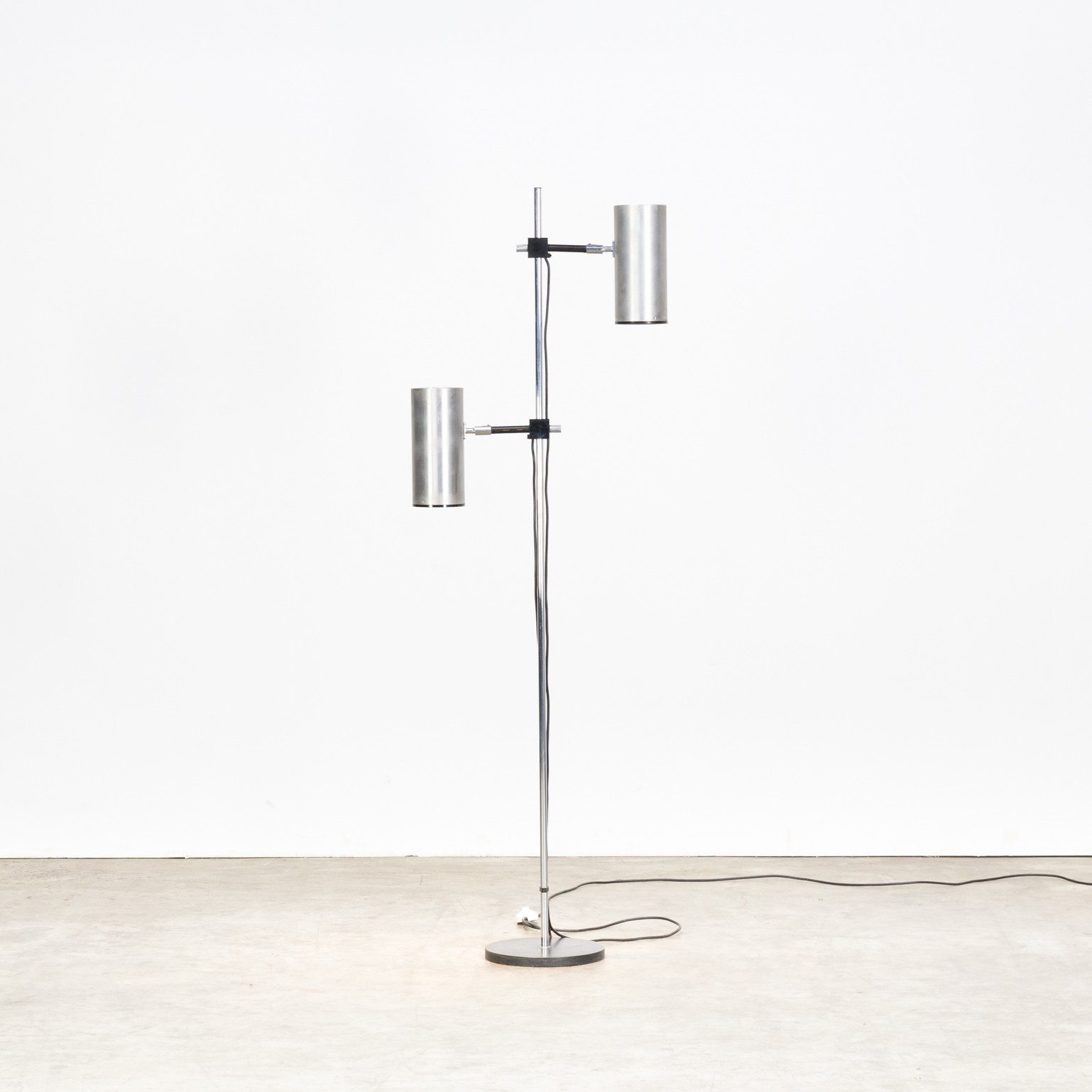
Επιδαπέδιο, διπλό φωτιστικό για την Uginox (δεκαετία 1960) | Πηγή εικόνας: barbmama.com
Η συνεργασία της με την Uginox σηματοδότησε την εξ ολοκλήρου προσωπική στροφή της προς τις ιδιότητες του ανοξείδωτου ατσαλιού.
«Nothing is more beautiful than steel»
Μετά τις συνεργασίες της με μεγάλους γαλλικούς οίκους μόδας, όπως τους Dior, Hugonet και Hermès, και τη δημιουργία του δικού της καταστήματος στο Place des Vosges στη Le Marais, η Pergay καθιερώνεται ως η κατεξοχήν designer του ατσαλιού, το οποίο όμως κατά τη δεκαετία του 1960 συνδυάζει με άλλα υλικά, όπως ημιπολύτιμους λίθους, κοχύλια και ασιατικές αντίκες εποχής. Ωστόσο, στο τέλος της δεκαετίας σχεδιάζει τα πρώτα και εμβληματικά έπιπλα: τα καθίσματα Chaises anneaux και Flying Carpet Daybed (1968) και το Bancs vague (1970).
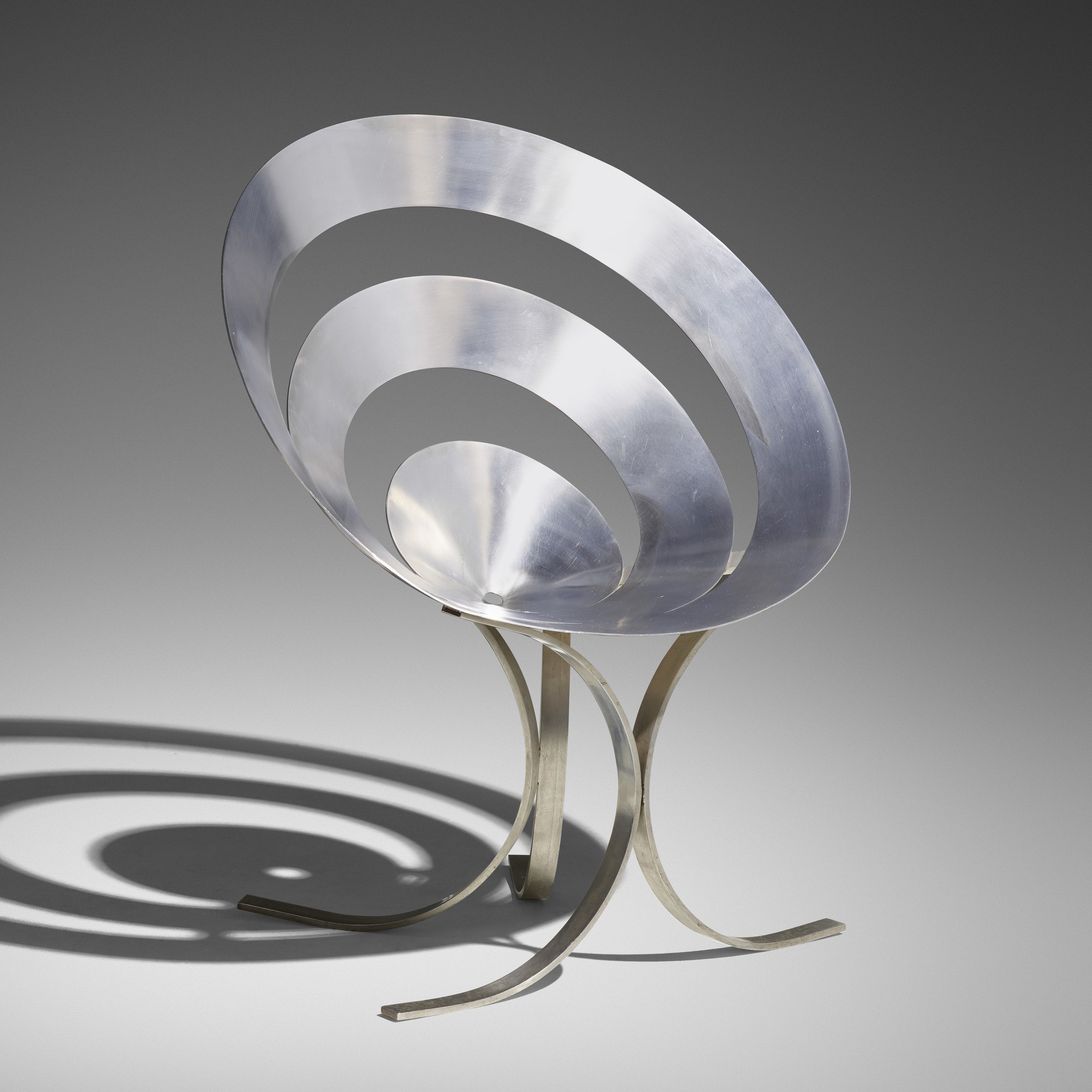
Chaises anneaux (M. Pergay, 1968) | Πηγή εικόνας: wright20.com
Και τα τρία καθίσματα χαρακτηρίζονται από τη λεπτή επεξεργασία του υλικού και την επιμελή ολοκλήρωση της κατασκευής, με το φινίρισμα να δίνει μία εξαιρετική λάμψη, η οποία, βέβαια, δεν στερεί τη μίνιμαλ αισθητική από το τελικό αποτέλεσμα.
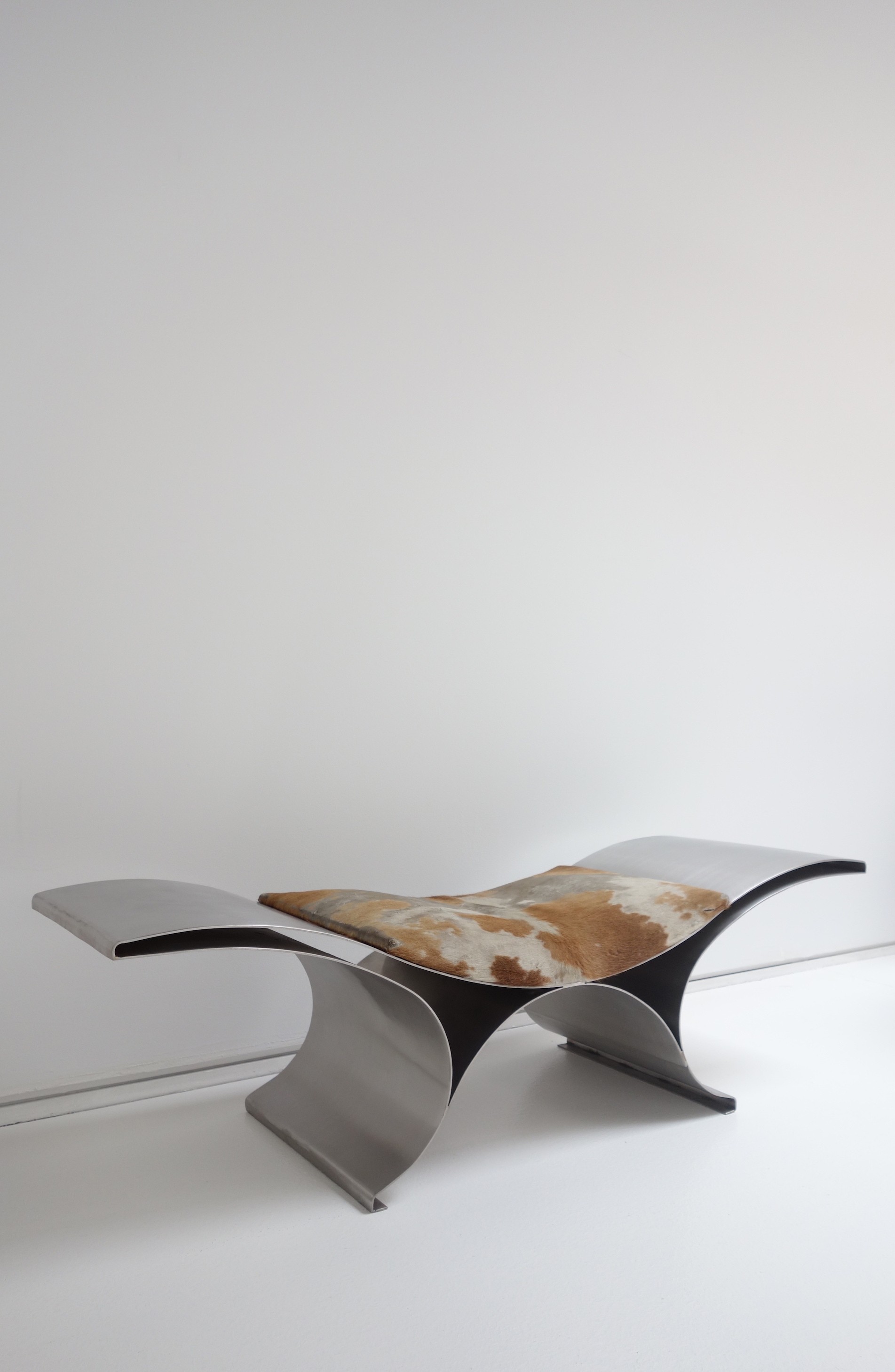
Vague (1970) | Πηγή εικόνας: jousse-entreprise.com
Την ίδια λογική σχεδιασμού ακολουθεί και το Flying Carpet Daybed, το οποίο, παρά το φαινομενικά ψυχρό και άκαμπτο υλικό κατασκευής, δεν χάνει την ουσία της αναπαυτικότητας, αφού η Pergay, μέσω του «κύματος» στο σχέδιο, ακολουθεί την καμπυλότητα του σώματος που αγκαλιάζεται από το έπιπλο.
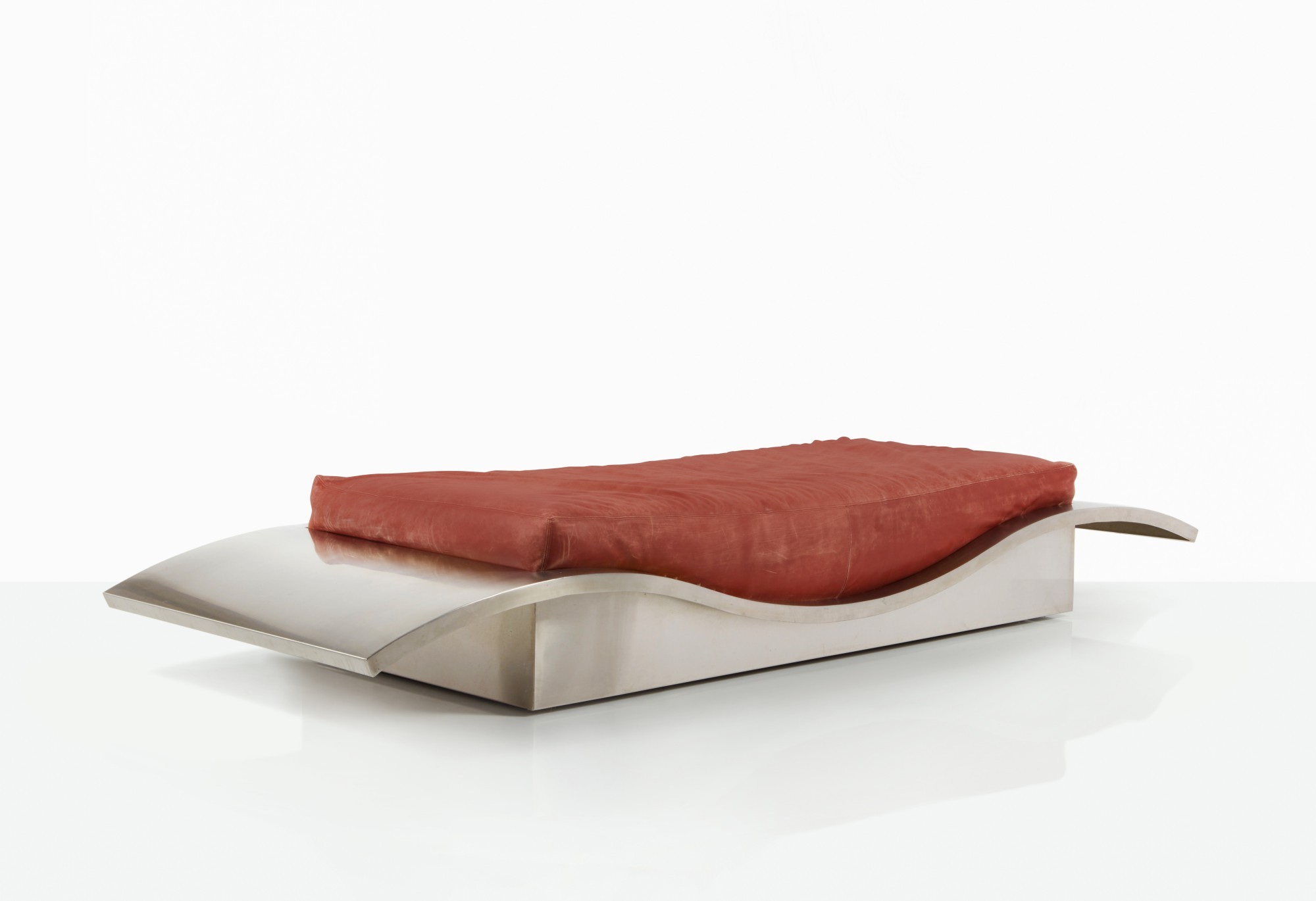
Flying Carpet Daybed (Μ. Pergay) | Πηγή εικόνας: sothebys-md.brightspotcdn.com
Φυσικά, εκτός από τα καθίσματα, τα σχέδια της Pergay επεκτείνονται και σε τραπέζια, όπως το Dining Table (τέλη 1960), με την ιδιαίτερη στήριξη να θυμίζει το σχήμα του κύματος που είδαμε στα καθίσματα, δημιουργώντας ένα ντελικάτο αποτέλεσμα.
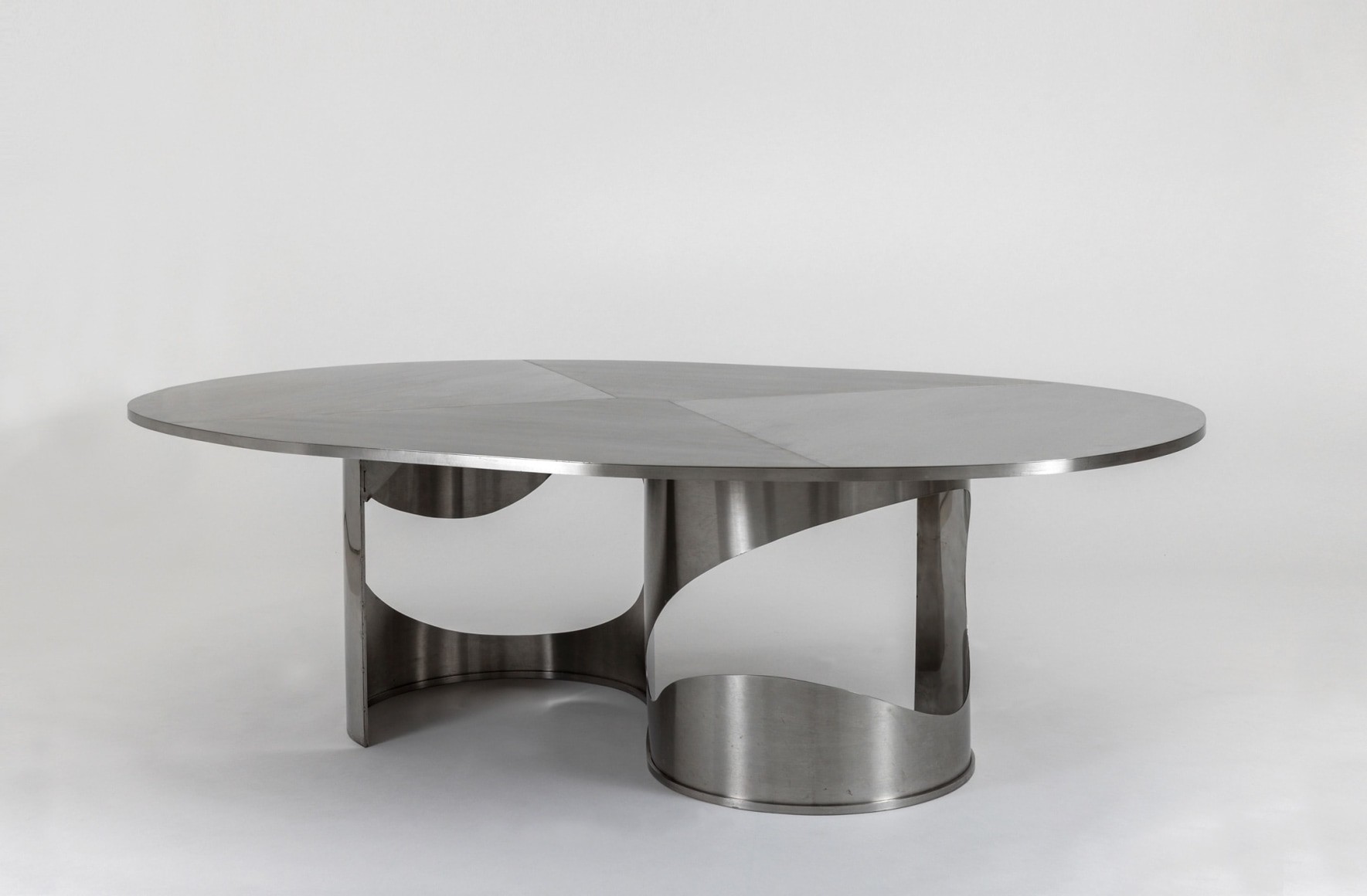
Dining Table (M. Pargay) | Πηγή εικόνας: img.artlogic.net
Όπως μπορεί εύκολα να διαπιστωθεί, η Pergay κατάφερε να συνδυάσει το βιομηχανικό ανοξείδωτο ατσάλι με τη λεπτότητα στον σχεδιασμό και την άνεση. Ωστόσο, αν και το κύριο υλικό της δεν θυμίζει σε τίποτα φυσική πρώτη ύλη, η ίδια επιλέγει μοτίβα που εμπνέονται από τη φύση, όπως τα σπειροειδή μοτίβα, μοτίβα κύματος κ.α., μην κρύβοντας σχεδόν ποτέ -είτε χρωματίζοντας είτε καλύπτοντας- το βασικό υλικό. Άλλωστε, όπως δηλώνει και η ίδια σε συνέντευξή της, «My personal style has always been to mix ancient and modern».
Η εξέλιξη του design της
Αν και ποτέ η Maria Pergay -στη μέχρι τώρα πολύχρονη καριέρα της- δεν εγκατέλειψε τη μεγάλη της αγάπη για το ατσάλι και τη μίνιμαλ αισθητική, τα τελευταία χρόνια η designer δημιουργεί περισσότερο πολύπλοκες συνθέσεις, με τη χρήση και άλλων πρώτων υλών, τις περισσότερες φορές φυσικών. Αμμωνίτης, ξύλο φοίνικα, φίλντισι και γούνα είναι κάποια από τα υλικά που βλέπουμε να βρίσκονται συχνά σε χρήση στις δημιουργίες της, όπως στη συνεργασία της, το 2013, με τον ιταλικό οίκο μόδας FENDI ή το έπιπλο Drape A του 2005, στο οποίο η Pergay έκανε εμφανές το πόσο καλά επεξεργάζεται και συνδυάζει το ατσάλι με διαφορετικά είδη ξύλου.
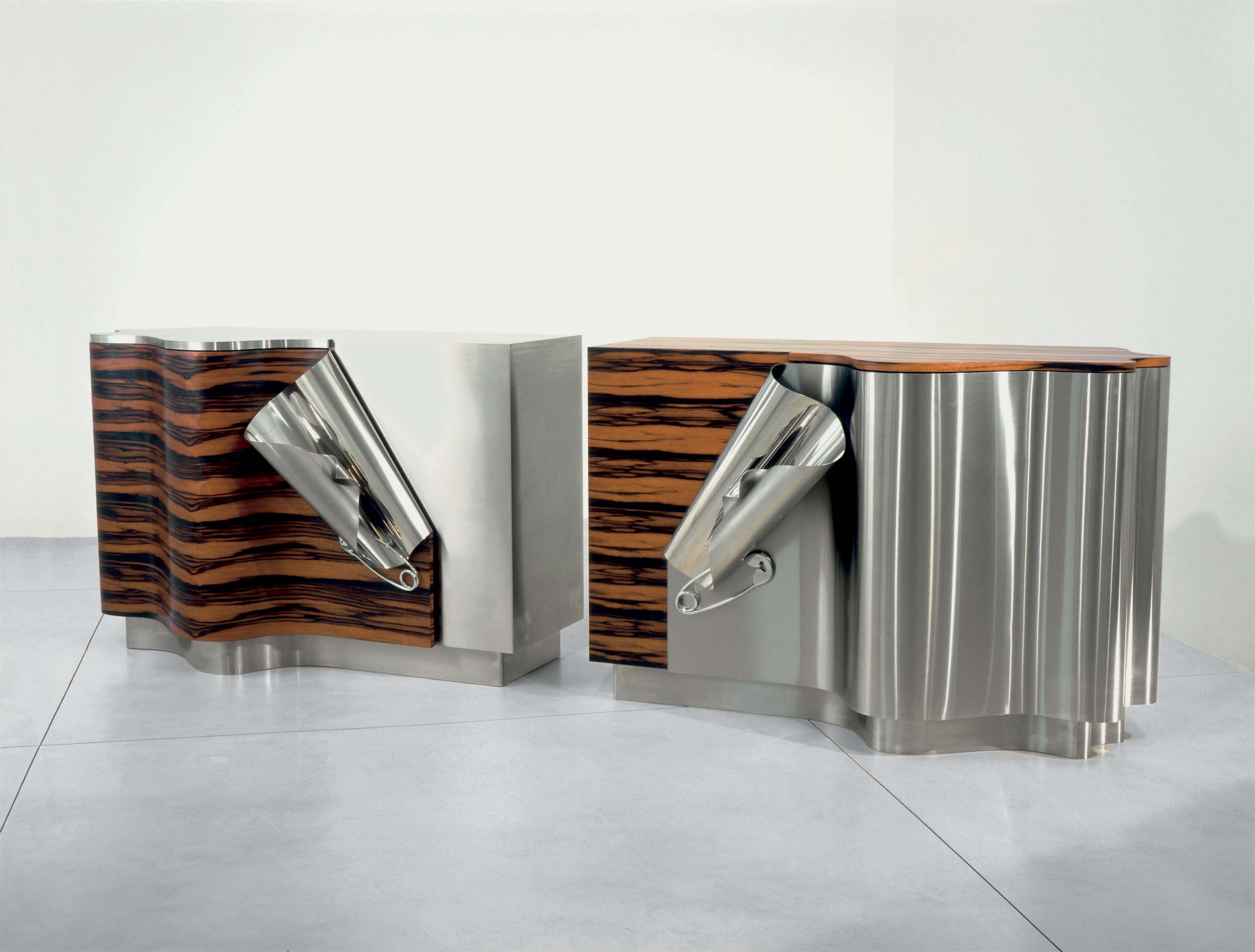
Μέρος του Drape A (2005) | Πηγή εικόνας: blogs.cotemaison.fr
Η σπουδαιότητα της δουλειάς της
Μέσω της δουλειάς της, η Maria Pergay κατάφερε να φέρει στο προσκήνιο του γαλλικού design ένα υλικό, για πολλούς, παρεξηγημένο. Η σωστή χρήση και επεξεργασία του, η υβριδικότητά του και ο τρόπος που μπορεί να συνδυαστεί με άλλα υλικά, περισσότερο συμβατά με το κλασσικό, έως τότε, design, κάνει το έργο τής Pergay μοναδικό πρότυπο έμπνευσης. Μίας έμπνευσης, όμως, που δεν μένει στάσιμη, αλλά που προσπαθεί να εξελίσσεται συμπαρασύροντας την πορεία του σχεδιασμού σε μία διαφορετική και άκρως ενδιαφέρουσα πορεία. Μια πορεία που στάθηκε η αφορμή για τον επαναπροσδιορισμό της χρήσης του ατσαλιού για την κατασκευή αντικειμένων design υψηλής αισθητικής ποιότητας.
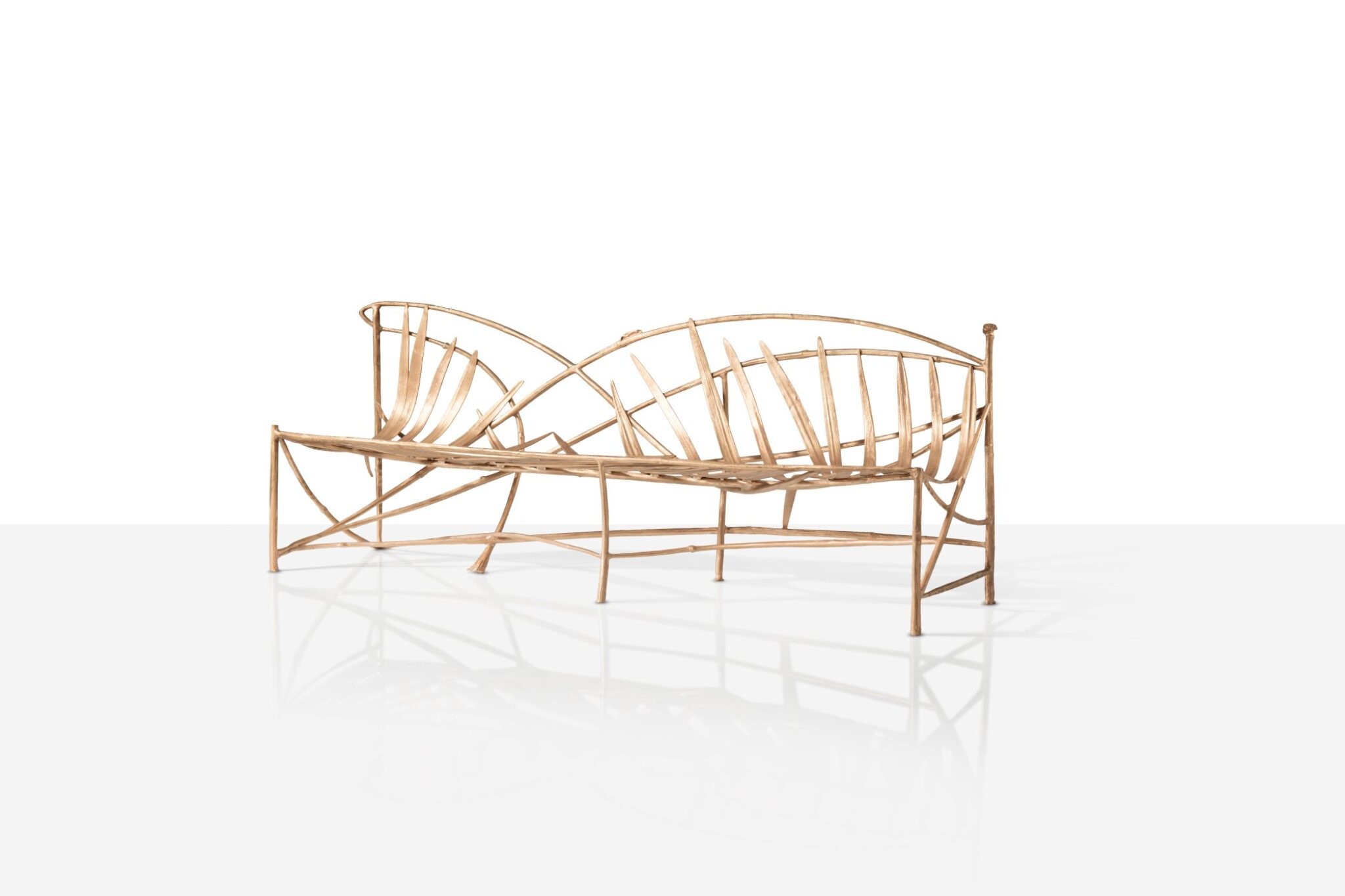
Red Pouf (2007) | Πηγή εικόνας: sothebys-md.brightspotcdn.com
Πηγές / Περαιτέρω ανάγνωση
MARIA PERGAY – TIMELESS AESTHETICS IN STAINLESS STEEL. Από: blackqube.de.
Συνέντευξη: MARIA PERGAY ON ART AND LINES. Από: crash.fr.
Maria Pergay: Iconic. Από: galleriesnow.net.




